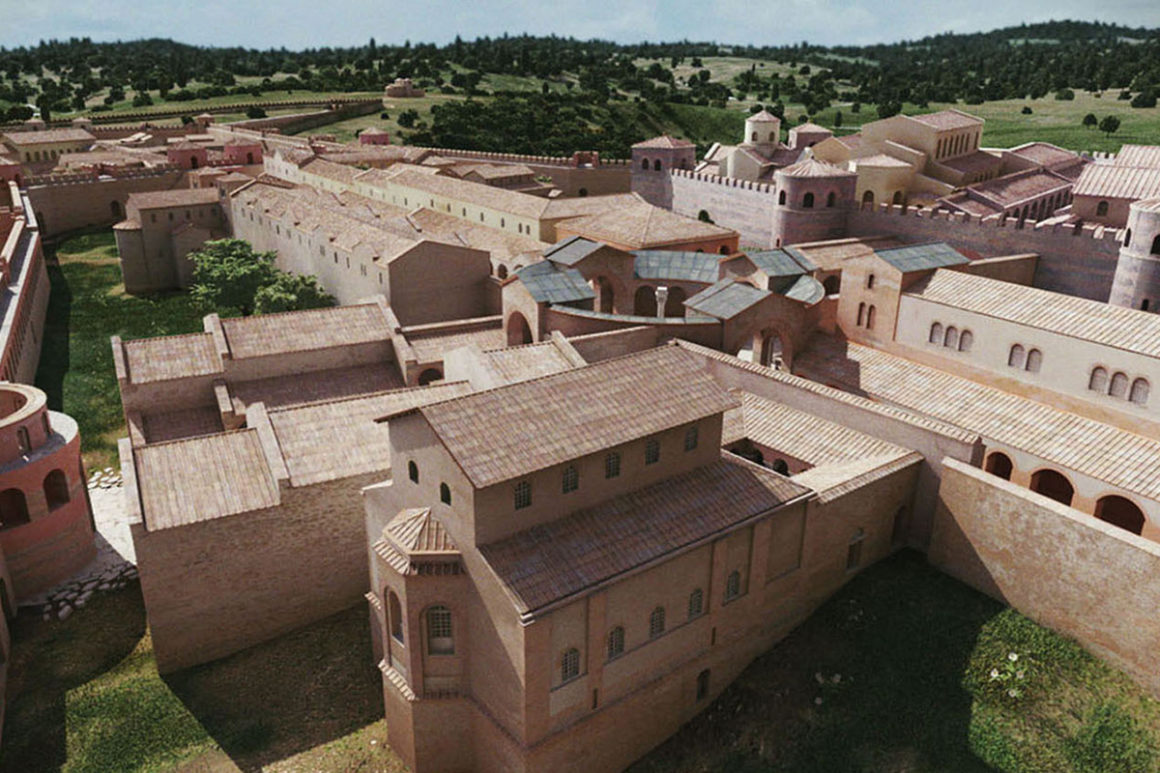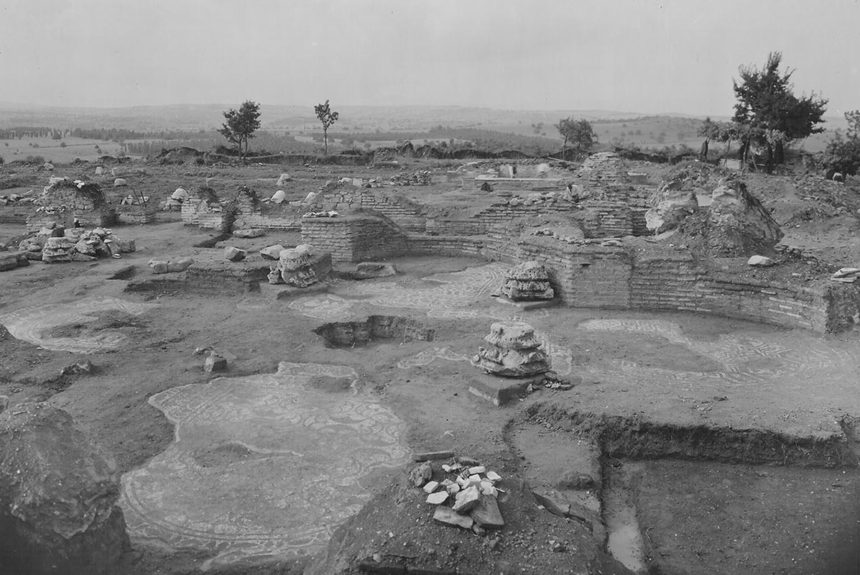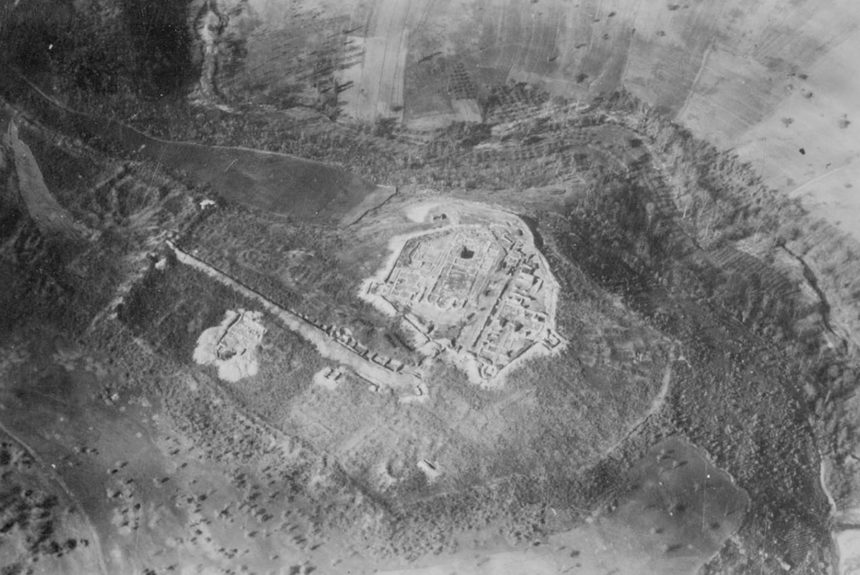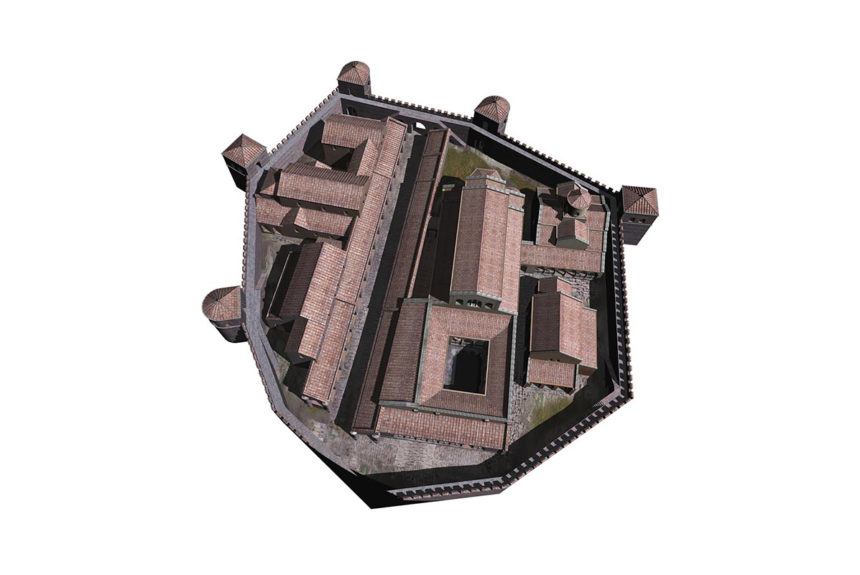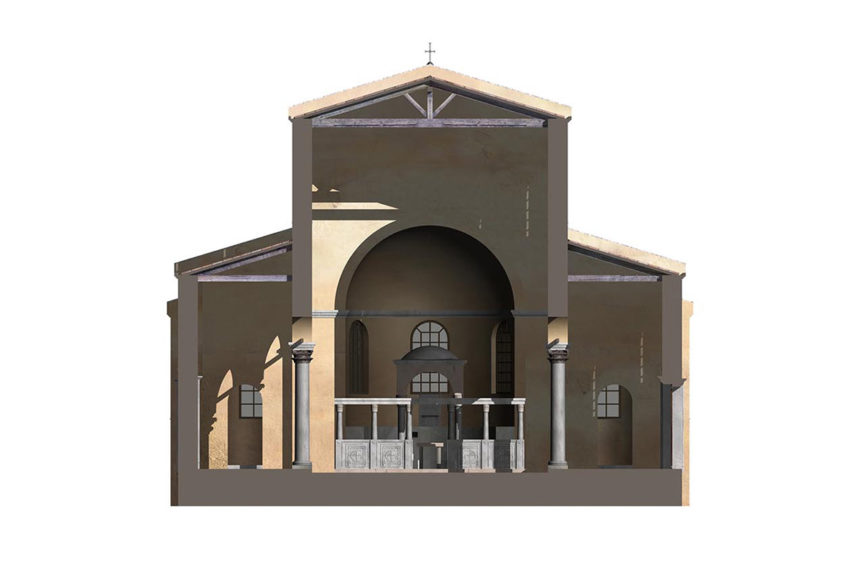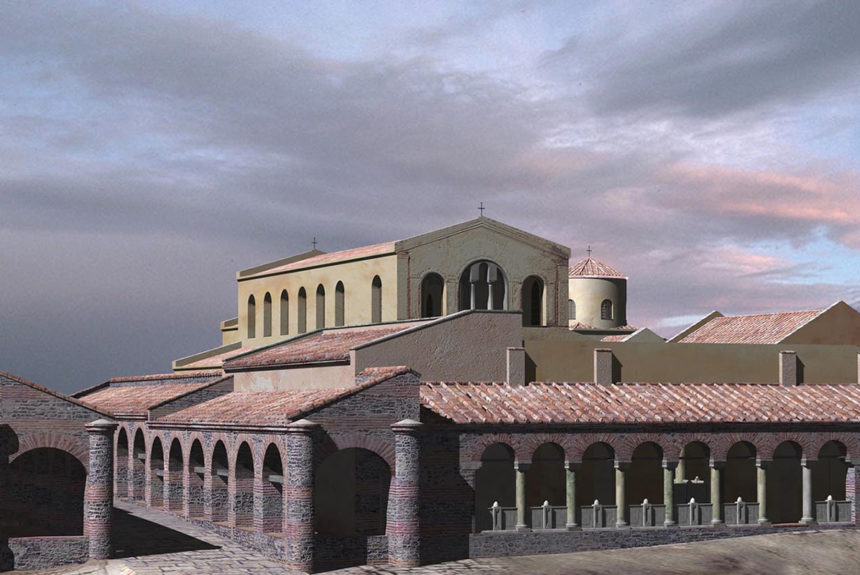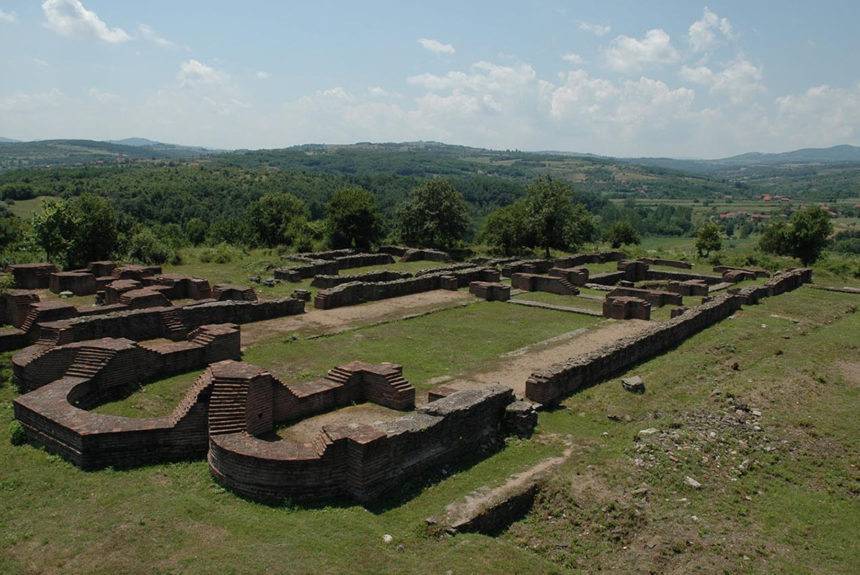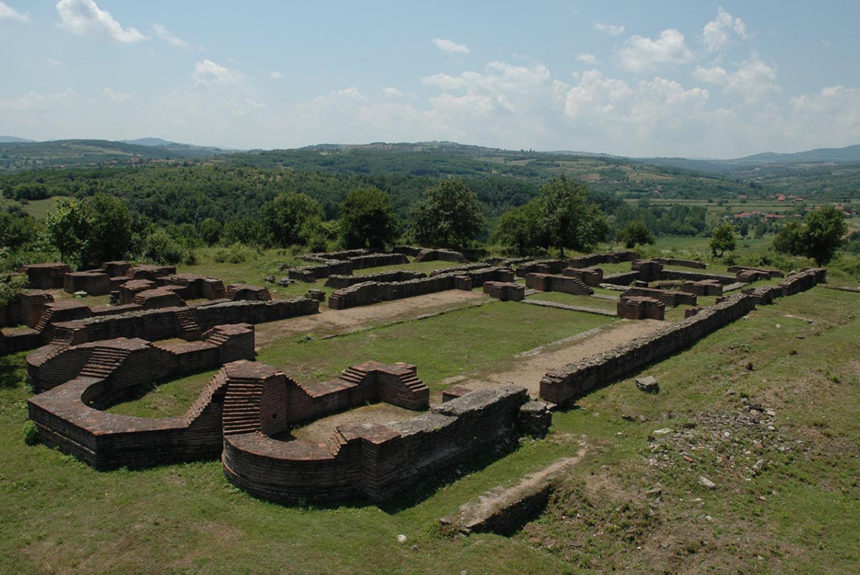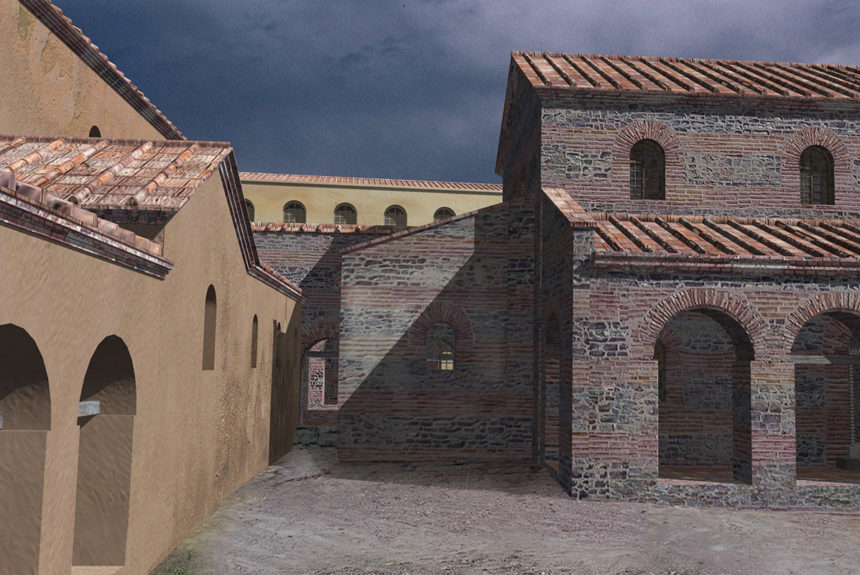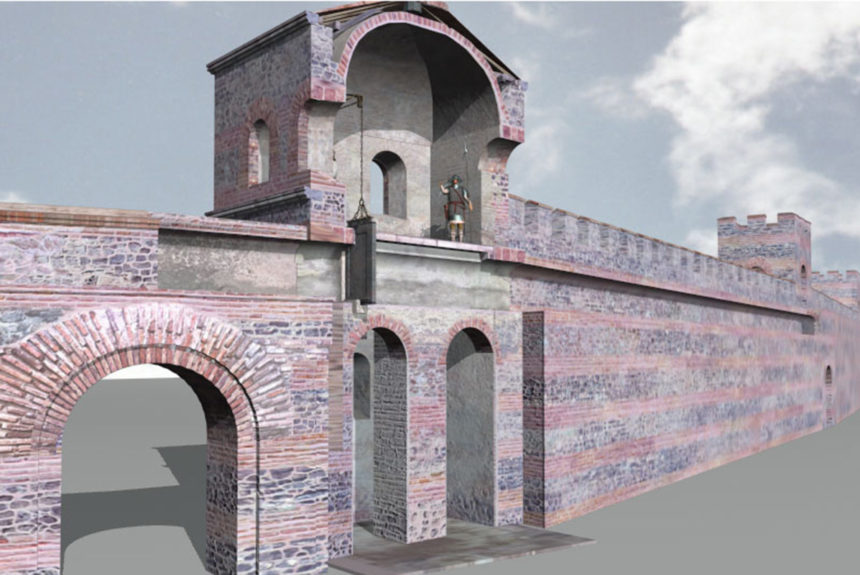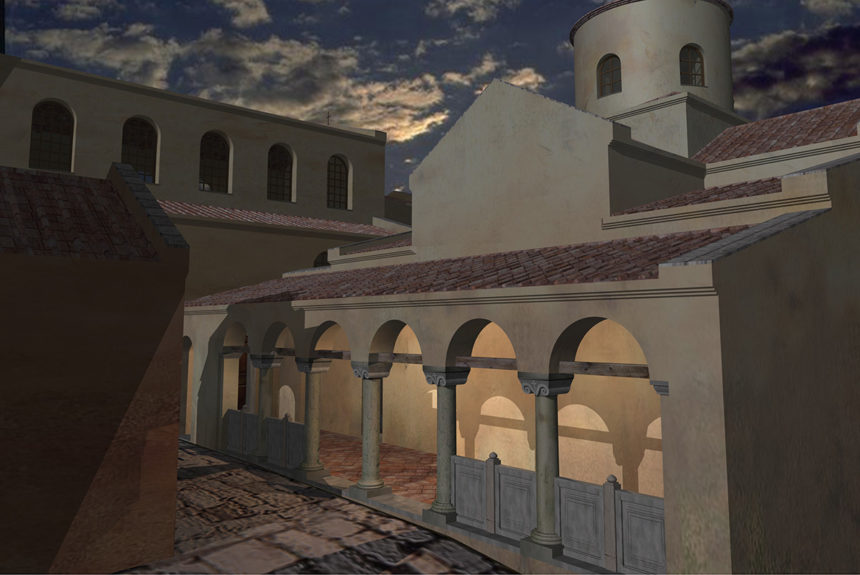Justiniana Prima Archeological Site is located in the south of Serbia, 30 km southwest of Leskovac, in a valley stretching between the rivers Jablanica and Pusta Reka.
Most researchers today consider this impressive early Byzantine city of Justinian Prima, the endowment of one of the largest Byzantine emperors – Justinian I (527-565), whose Novel XI from 535 assigned a new city the role of the Archdiocese seat and the Praetorian prefecture of North Illyricum.
The city was built on a rocky plateau at the highest altitude of 395 m, at the mouth of Caričinska in Svinjarička Rivers. It is surrounded by powerful ramparts with towers, and in the south, at the lowest part – by a water trench. In its immediate vicinity there were three fortifications for protection. The city was entered from the south and east, through three monumental gates with towers.
The narrow space of the city (in muros), measuring about 10 hectares, consists of three architectural units, defended by powerful stone ramparts built by the technique of opus mixtum. In the highest part is the Acropolis, which was in the service of the Archdiocese. The upper city extends around the Acropolis and is divided into four blocks by two streets. At the point of the intersection there is a circular square – a forum. Craft and trade shops and public and residential buildings were located along the streets. The Lower Town extends south of the Upper Town, with religious buildings, public facilities and residential district identified there.
Remains of a dam-bridge are visible on the river Caričina Rečica, above which a smaller rectangular fortification rises.
The slopes around the town and the plains and the plain on the south side, an area of about 20 hectares, were the suburbs inhabited by people responsible for the economic development of the town. They were engaged in agriculture, livestock and various crafts.
Justiniana Prima was an urban planned city. All the experiences and achievements of the construction of the ancient world were applied in its construction. It had a developed water supply and sewerage network, bathrooms and faucets. 17 km long aqueduct brought water into the city to a large water tank.
Archaeological excavations at the site of Justiniana Prima began in 1912 under the leadership of Professor Vladimir Petković and they, with some interruptions, continue to this day. A new phase in the systematic scientific study of Justinian Prima began in 1978, when the French Archeological School from Rome joined the research.
Four rings of ramparts, eight basilicas, numerous public buildings, a spa, a central square, streets with porticoes, an aqueduct, a large cistern, a water tower, a dam with a lake, craft stoves and a network of fortifications near the town have been discovered for now. A lot of movable archeological materials were found: objects made of terra cotta, metal, glass, bone, as well as money to illustrate life in the town.
Justiniana Prima lived for a very short time – 80 years. Built in 530s, it was demolished at the beginning of the 7th century – in the rush of Avars and Slavs. The towns, fortifications and the whole system of Byzantine rule were demolished at that time.

